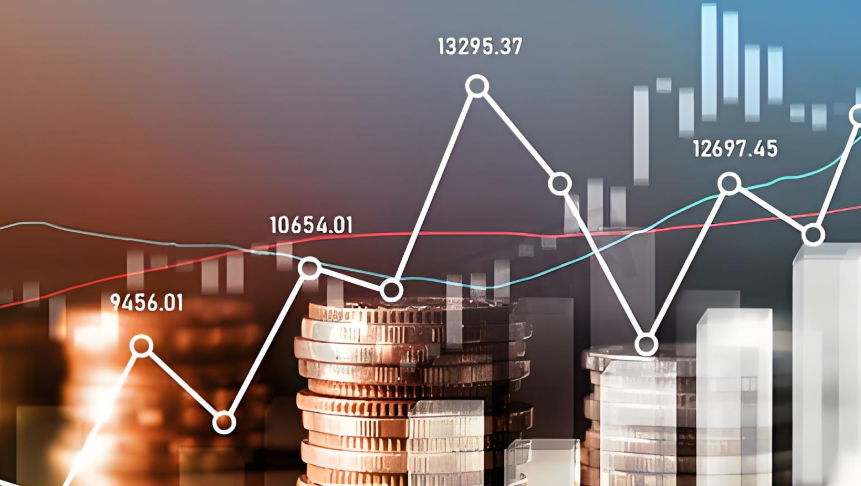U.S. Markets Drop Over 1%
Advertisements
Last Friday marked a tumultuous day for Wall Street as the latest non-farm employment figures were released, revealing a mixed bag of results that contributed to a decline across all major indices. The S&P 500 fell over 1% for the day, while the Nasdaq Composite suffered even more, plummeting by 2.5%. This drop is particularly notable as it reflects the weakest performance in the stock market since the regional banking crisis earlier in 2023. For four consecutive days, the S&P 500 index has seen red, and the credit spreads are widening at a pace not observed since early August. The semiconductor sector was hit the hardest, with its index crashing by an astonishing 12%, marking the largest single-day loss since the pandemic began.
As reported by Bloomberg, the negative repercussions of the Federal Reserve’s hawkish policy - which has been in place for over two years - are coming to fruition, underscores a financial market straining under the weight of economic sensitivity. The oil price has regrettably reverted to its early 2024 levels, while copper, a crucial industrial metal, has seen sharp declines over the past sixteen weeks, losing ground in thirteen of those weeks. Meanwhile, yields on two-year US Treasury bonds have plummeted to their lowest points since 2022, suggesting that bond investors are adjusting their expectations toward faster rate cuts, given the changing economic indicators.
This volatility in the markets paints a stark picture: as bond markets are often considered to lead equity markets, last week's divergence was particularly alarming. While the S&P 500 was lingering near its 52-week highs, the yield on the two-year note was resting comfortably close to its 52-week lows—a disconnect that raises eyebrows among investors trying to navigate these stormy waters, a scenario that has not been observed since 2019.
In a particularly striking turn of events, the yield on two-year Treasury bills dipped below that of ten-year Treasury bonds, completing a prolonged period of yield curve inversion that lasted for an astonishing 26 months. A return to a steeper yield curve often signals impending economic recessions, suggesting that traders and analysts alike are increasingly on high alert for economic downturns.

Historically, the shape of the yield curve provides significant insight into investor sentiment and economic forecasts. Typically, an upward-sloping yield curve is observed as longer-term bonds command higher interest rates due to the increased uncertainty associated with longer maturities. When investors perceive greater risk—or optimism—about future economic conditions, they might accept lower yields on longer-term bonds, which tends to lower short-term yields as well. A reversal in this historical pattern raises alarm bells; in the past, US recessions have invariably begun after such yield curves have returned to positive territory. Now, with the Federal Reserve poised to lower interest rates, the economy may be landing softly, enhancing the potential for yield curves to steepen again as a response to changing market dynamics.
Analyzing the current economic indicators and stock market trends reveals a concerning narrative: the American economy appears to be decelerating at an alarming rate. The absence of swift and effective policy remedies from the Fed raises considerable doubt over its ability to steady the ship. If such a trend persists, the U.S. stock market will likely experience increased volatility and downward retracement risks. Thus far in 2023, the S&P 500 has accumulated over a 13% increase; however, its price-to-earnings ratio has surged to near 21 times projected earnings for the next twelve months, significantly exceeding its historical average of 15.7. This inflated valuation suggests that the stock prices have outstripped expected corporate earnings, amplifying concerns of overvaluation in the present market.
The ramifications of a potential U.S. economic decline reverberate throughout the financial markets. Analysis from JPMorgan indicates that the risk of recession is steadily increasing. Should this risk materialize, the financial markets could brace for significant turbulence. Traders’ sentiments are prone to exaggerated shifts, complicating capital flows and intertwining investment factors that may propel asset prices beyond rational levels based on market fundamentals. Recently, the stock market has displayed marked retracement, largely driven by excessive positions and inflated valuations—especially among tech giants that have found themselves at the epicenter of speculative highs. During this market adjustment, pervasive pessimism has further eroded investor confidence, while seasonal pressures—such as capital reallocation towards year-end—compound the downward pressures on stock prices.
Investors are now left grappling with the fallout of these forces playing out in real-time, revealing a market grappling with uncertainty. The scenario remains fluid, and as traders and analysts continuously scan incoming economic data for signs of stability or further decline, the market's next movements will ultimately hinge on the Federal Reserve's reactions and the underlying health of the broader economy. What developments lie ahead remains uncertain, but the watchful eyes of market participants are fixated on every piece of information as they navigate this increasingly choppy economic landscape.
Leave a Reply